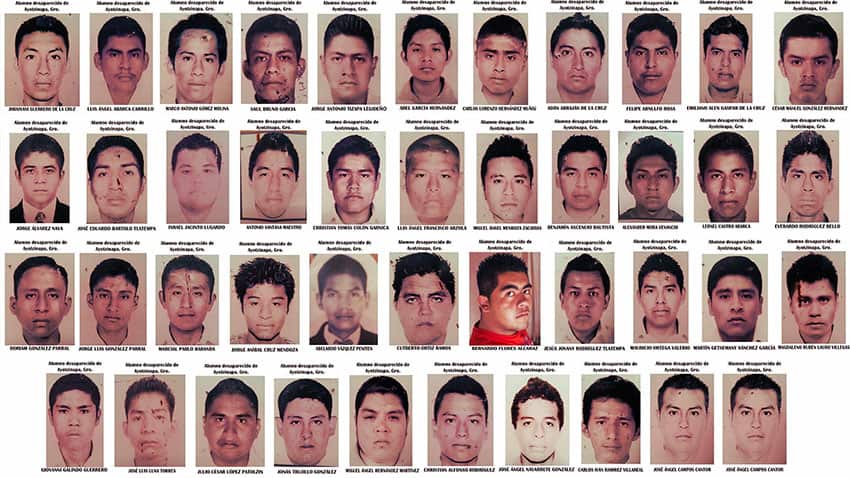Seven years after 43 students were abducted and presumably killed in Guerrero, the students’ families, anti-violence activists and everyday citizens are still clamoring for justice.
At a protest march and rally in Mexico City on Sunday to mark the seventh anniversary of the students’ disappearance, parents expressed frustration with the government’s investigation.
“With this government it seemed that the path to the truth was clearer but with the passage of time it has become steeper and full of thorns and stones that prevent us from reaching our objective, which is to know the whereabouts of our sons,” said Hilda Hernández at a rally at the zócalo, Mexico City’s central square.
The mother of César Manuel González Hernández said parents will keep up their fight amid adversity due to the COVID-19 pandemic and despite “the maze of a lethargic justice system.”
The government rejected its predecessor’s “historical truth” about what happened to the students after their disappearance in Iguala on September 26, 2014 and launched a new probe. But almost three years later it has not divulged its own definitive version of events.

No one has been convicted of the crime, scores of suspects have been released from prison – many because they were subjected to torture, and the remains of just three of the 43 students have been found.
A key aspect of the previous government’s version of events was that the students’ bodies were burned in a dump near Iguala after they were killed by members of a local crime gang in cahoots with municipal police. But experts concluded there wasn’t a blaze of significant intensity at the dump to incinerate 43 corpses.
The army has long been suspected of involvement in the students’ disappearance, and leaked testimony obtained by the newspaper Reforma earlier this year supported that theory.
“We’re asking President López Obrador to investigate the army thoroughly,” said Cristina Bautista, another mother of one of the missing students. “… They had knowledge [of what happened].”
Hilda Legideño, whose son Jorge Antonio Tizapa Legideño was among the victims, accused the previous federal government of fabricating evidence to support its version of events, an opinion shared by the special division of the federal Attorney General’s Office that is conducting the new investigation.
The current government has shown political will to get to the bottom of what happened but it hasn’t delivered results, she said.

“We’ve been waiting for three years but we don’t know the whereabouts of our sons,” Legideño said.
Another mother who was cited by the newspaper Milenio but not identified by name rebuked the federal government for failing to secure the extradition of Tomás Zerón from Israel. The head of the now-defunct Criminal Investigation Agency is accused of torture and tampering with evidence.
Along with former attorney general Jesús Murillo Karam, Zerón is considered a key architect of the so-called historical truth.
“Officials who endorsed the historical truth continue to hold high-ranking positions in the Attorney General’s Office,” the unnamed mother told Milenio.
According to the Mexico City government, approximately 3,500 people participated in Sunday’s march, which departed the Angel of Independence monument on Reforma Avenue at 4:00 p.m. and reached the zócalo in the late afternoon. The facades of some buildings along the route were graffitied with messages such as “We’re missing 43” and “We’ll neither forgive nor forget” but there were no reports of violence.
There was also a protest march on Sunday in Chilpancingo, the capital of Guerrero, where some 300 students and activists took to the streets to demand justice in the seven-year-old case.
